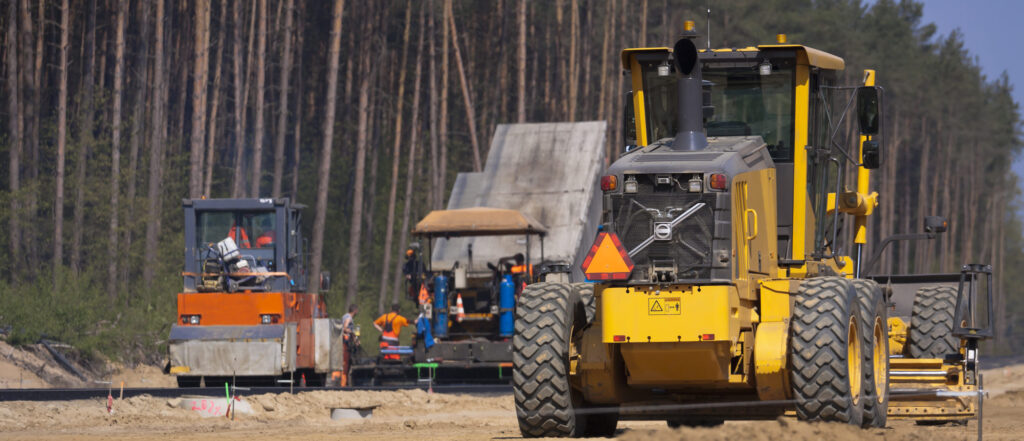
Mammoth Grading, Inc. Decision Impacts Lien Rights of North Carolina Subcontractors and Suppliers
This appeal began with the filing of the two now infamous cases, In re Harrelson Utilities, Inc. No. 09-028158 (E.D.N.C. Bankr. July 30, 2009), and In re Mammoth Grading, Inc., No. 09-01286-8 (E.D.N.C. Bankr. Aug. 24, 2009). Both companies were then seeking voluntary Chapter 11 bankruptcy protection.
Ferguson Enterprises Inc. (“Ferguson”) was an unpaid subcontractor on numerous real estate development projects throughout North Carolina, which Mammoth Grading, Inc. (“Mammoth”) and Harrelson Utilities, Inc. (“Harrelson”) were acting as general contractor or first tier subcontractor. After the filing of Mammoth’s and Harrelson’s bankruptcy petitions, Ferguson (and several other subcontractors and suppliers) filed multiple notices of claims of lien upon funds due Harrelson and Mammoth and filed multiple claims of lien by way of subrogation to Mammoth’s and Harrelson’s lien rights on the various tracts of improved real property.
The Adverse Ruling
In each case, the bankruptcy court for the Eastern District of North Carolina held that the post-petition filing and service of claims of liens and notices of claims of lien upon funds by Ferguson and various other subcontractors and suppliers to Mammoth and Harrelson violated the automatic stay imposed by §362 of the United States Bankruptcy Code. This meant that unless subcontractors and suppliers filed their liens prior to a bankruptcy petition, they had effectively lost their lien rights on a project. Along with four other subcontractors, Ferguson appealed the bankruptcy court’s orders in both cases to the United States District Court. On August 26, 2010, the United States District Court consolidated the Harrelson and Mammoth appeals.
Appeals Process
Prior to the bankruptcy court’s decisions in Harrelson and Mammoth, most North Carolina construction lawyers, contractors, subcontractors and suppliers operated under the belief that providing labor and/or materials for the improvement of real property within the definition of Chapter 44A of the North Carolina General Statutes provides them with inchoate lien rights that arise upon the furnishing of work or materials. It was also the belief that these inchoate lien rights may be perfected after a bankruptcy petition as an exception to the automatic stay provisions of the Bankruptcy Code. However, the bankruptcy court’s rulings in Mammoth and Harrelson held that a subcontractor’s lien rights do not constitute “an interest in property” within the meaning of one of the Bankruptcy Code sections that provides an exception to the automatic stay. In the words of the district court, the bankruptcy court’s rulings “ha[ve] turned the construction industry’s standard operating procedure on its head.” Ferguson and several other suppliers and subcontractors therefore appealed the bankruptcy court’s decisions to the district court.
District Court Ruling
On February 23, 2012, the district court for the Eastern District of North Carolina issued an order granting Mammoth’s Motion to Dismiss Ferguson’s appeal. However, the order goes on to comment on the Mammoth ruling. In the order, the district court questioned if the bankruptcy court’s rulings prohibiting the filing of notices of claims of lien upon funds and claims of lien after a bankruptcy case had been filed were in accordance with North Carolina statutory lien law and the constitutional protections afforded laborers and materialmen by Article X Section 3 of the North Carolina Constitution. This provision of the North Carolina Constitution specifically requires the General Assembly to make adequate provisions for a lien to protect the rights of those that provide labor and materials for the improvement of the lands of another. The district court went on to express particular concern that the bankruptcy court may have erred in determining that a lien under Chapter 44A, Article 2, Part 2 of the North Carolina General Statutes does not arise until the filing of a notice of claim of lien by the subcontractor. However, the district court elected to dismiss Ferguson’s appeal as moot and therefore did not reach a decision on its merits. However, the district court also vacated the Mammoth ruling and remanded the case to the bankruptcy court for further proceedings. This means that the ruling of the bankruptcy court in the Mammoth case is no longer good law.
What Does This Mean for North Carolina Lien Claimants?
Even with this ruling from the district court, not much has changed. In the Eastern District of North Carolina, the rulings from Harrelson, holding that the filing of a post-petition claim of lien or notice of claim of lien upon funds are a violation of the automatic stay, still remains. However, given the recent decision by the district court, there is now some doubt regarding the reasoning behind the rulings in Harrelson and Mammoth. That may lead other bankruptcy court judges to re-evaluate the Eastern District’s stance on post-petition liens in future cases. Also the Harrelson/Mammoth analysis of post-petition lien filings has not been adopted by the bankruptcy courts in the Middle or Western Districts of North Carolina. Finally, a legislative study commission has been formed to look at changing North Carolina’s lien law statutes. The study commission has met once and has scheduled two more meetings. It is still early in the process, but it appears that the study commission may recommend changes to the lien statutes that they believe would effectively nullify the rulings in the Harrelson/Mammoth cases. Stay tuned.


